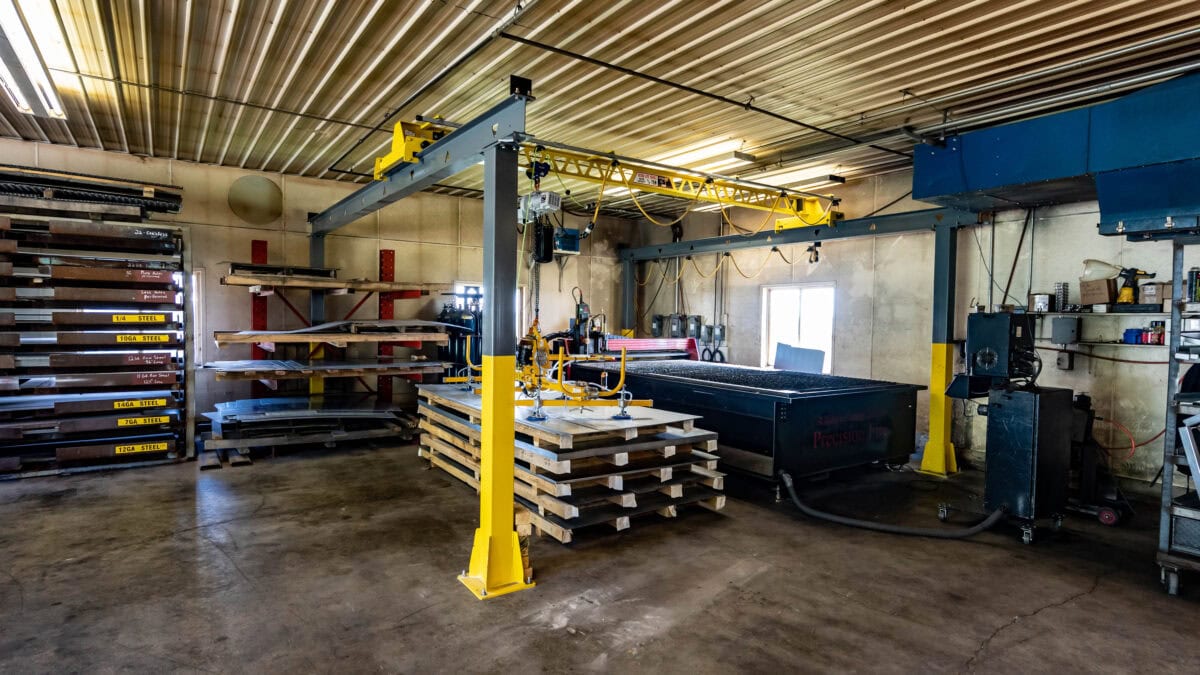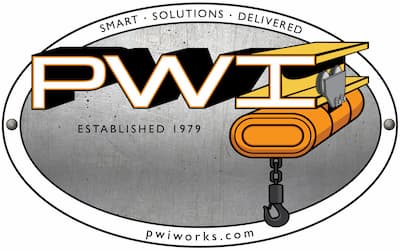Choosing the right workstation crane can be complicated. In this article, we explain the differences between header-braced and headerless workstation bridge cranes, why hook height is so important, and how to maximize the capacity of your production line with minimal ground-level obstruction.
Introduction
Workstation cranes are the ideal lifting tool for many production lines. They come in header-braced and headerless configurations.
Does it matter which one you choose?
In this article, we explain the advantages and disadvantages of using either a header-braced or headerless workstation bridge crane to help you make the right decisions for your production site.
How to Choose the Right Workstation Bridge Crane
A workstation bridge crane increases safety by reducing reliance on manual labor and improves productivity on a production floor. Aside from choosing between a header-braced or headerless structure, there are several important considerations in determining your workstation crane configuration.
- Length
- Width
- Capacity
- Hook height (how high the crane can lift a load)
Benefits of a Header Brace
To make the advantages easier to digest, we have broken them down into three categories to address the use of bridges, stability, and cost.
Multiple Bridges
It is possible to run multiple bridges with a header-braced workstation crane. This can drastically increase production of a work area if multiple bridges are needed at the same time.
Improved Stability
Header-braced workstation cranes are more stable because the header beams work to tie both sides together to provide lateral stability.
Cost
Even though there’s more steel material in a header-braced workstation crane, the cost is usually less than a headerless crane because the columns of a headerless crane are typically larger to add necessary stability. Foundations can often be required which drive the cost up exponentially as well!
What are the Downsides to a Header Brace?
The main issue with header-braced workstation cranes is their inherent lack of hook height. They require a space with sufficient headroom to accommodate the header brace, and even then they will suffer from a lower hook height compared to a headerless design.
Benefits of Headerless
A headerless workstation bridge crane has some significant advantages over the header-braced version in almost all categories. It is what PWI recommends for most applications.
Installation
Installing a headerless crane is easier and takes less time than a header-braced crane because there’s fewer items to erect.
Better Hook Height
Since there is no header beam on top of the runways, the bridge will be the highest point on the crane system. This is why a headerless crane has better hook height than a header-braced crane.
This is especially important in workspaces with lower ceilings. Getting the hook height as close to the ceiling as possible is often necessary to lift loads high enough to get the work completed.
Is a Headerless Workstation Bridge Crane Right For You?

For most applications, the number one requirement is to achieve the greatest possible hook height. This is why so many production facilities use headerless workstation bridge cranes.
PWI headerless systems require a more substantial reinforced concrete floor structure to bolt to. Footers are required in most cases.
If cost is a concern, the best option is to accept the penalty of a lower hook height and choose a header-braced workstation bridge crane which is normally cheaper. Note that a header-braced system may require footers for load capacities above 6 tons.
PWI leans toward giving the customer the best hook height. In the end, customers always wish for a higher hook height.
Contact the PWI team today for a free headerless workstation bridge crane quote.

![New Construction vs Mezzanine [PDF]](https://pwiworks.com/wp-content/uploads/new-construction-vs-mezzanine-pdf-464x600.jpg)